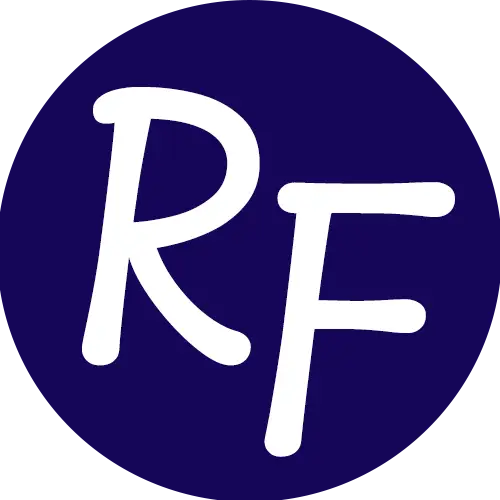You know those moments when you’re sitting in a leadership meeting, watching the dynamics unfold, and suddenly you notice patterns that reveal a deeper story? That’s exactly how the characters in “The Convergence” began to take shape. Pull up a chair, grab your coffee, and let me share something fascinating about how these characters emerged from decades of watching how people navigate complex organizational changes.
What surprised me is that I didn’t start with the plot. I started with people. After years of working with leaders who navigate difficult transitions, I’ve learned that the most interesting stories happen in the space between duty and discovery. That’s where our characters live.
Samantha Reed
Let’s take a moment to discuss Samantha Reed. You know those high-potential leaders who thrive on maintaining order but begin to pose uncomfortable questions? Samantha started off that way. In early drafts, she was actually portrayed as male, resembling a more traditional authority figure. However, something just wasn’t resonating. I kept reflecting on the most effective change managers I had worked with—those exceptional individuals who could uphold structure while staying receptive to transformation.
Here’s an intriguing tidbit that didn’t make it into the book: Samantha’s first encounter with unified magic took place during a routine training exercise. She was following standard protocols and adhering to all the guidelines when something unexpected happened. Her magic naturally resonated with another student in a way that felt more authentic than any approved technique. That moment haunted her, even though she buried it deep inside. It’s similar to those instances when we catch a glimpse of a better way to do things but aren’t quite ready to challenge the established order.
The psychological impact of using unified magic was particularly fascinating to develop. Think about those moments when you discover that everything you’ve been taught about leadership or organization might be based on artificial constraints. How do you handle that realization? How does it change you?
I drew heavily from my experience working with leaders during major organizational transformations. You see the same patterns: the initial resistance, the moment of truth, the struggle between maintaining control and embracing necessary change. Samantha’s journey mirrors what I’ve seen countless times in the corporate world, just with higher stakes and more spectacular visuals.
I had to cut a scene from the final book that really illuminates this. Samantha is reviewing historical records of magical incidents, looking for patterns, when she discovers a report about two mages whose powers spontaneously unified during a crisis. The official report blamed equipment malfunction, but the personal notes told a different story. It’s like finding those old corporate memos that hint at better ways of working that were deliberately buried.
I’ve scattered references to Samantha’s past throughout the book, little breadcrumbs that hint at her journey. Some readers have spotted them, others haven’t, but they’re there if you know where to look. Her preferred magical patterns, for instance, always tend toward natural symmetry rather than enforced order, even when she’s consciously trying to maintain control.
At her core, Samantha embodies something I have repeatedly observed in my career: the most effective leaders aren’t those who maintain control through force but those who learn to recognize and work with natural patterns of human interaction and organization. The challenge is what happens when those natural patterns conflict with established systems of control.
Want to know something fascinating about her character development? Originally, Samantha was meant to be entirely loyal to the Federation until the very end. However, as I began to write her, inspired by real experiences with transformational leaders, I realized that someone with her insight and integrity would start to question things much earlier. The key was to make her resistance to change believable while keeping her fundamental integrity intact.
Connor Blake
Let’s discuss Connor Blake. You know those exceptional employees who perceive what lies beyond the existing systems? The ones who identify critical flaws in how things operate and can’t ignore them? That’s where Connor’s character originated.
Here’s something fascinating: Connor wasn’t originally supposed to be a co-protagonist. In early drafts, he was the antagonist, symbolizing chaos against order. However, as I drew from my experiences with organizational change, I recognized that his story was more complex. It reminded me of those moments when someone in your organization identifies a fundamental problem that everyone else has learned to work around.
Throughout my career in tech leadership, I have worked with numerous whistleblowers and system challengers. Some were destructive, focused only on tearing things down. But the most compelling ones were those who saw better possibilities. They weren’t just fighting against the current system; they were fighting for something better. That insight completely transformed Connor’s character.
Let me share a scene that didn’t make it into the final book. It shows Connor’s last day as a loyal Federation member. He’s reviewing ancient texts in the restricted archives, following standard protocols, when he notices a pattern in the mathematical frameworks—not an error but an intentional alteration. It’s like finding out your company’s foundational processes were deliberately designed to limit potential rather than maximize it.
The psychology of his transformation fascinated me. How does someone move from being a top performer within a system to its greatest threat? I thought about the tech leaders I knew who left prestigious positions to create something radically different. The common thread was always the same: they didn’t start wanting to break things. They started by trying to make things better.
Building Connor’s network of supporters was particularly interesting. In early drafts, they were just rebels and outcasts. But then I remembered how real organizational change happens. It’s never just the obvious rebels. It’s also the quiet supporters, the ones who see the truth but aren’t ready to act on it yet. The ones maintaining their positions within the system while quietly helping change happen.
Something readers might not notice at first glance is that Connor’s experimental approach to unified magic closely resembles many of the principles of innovation I encountered in tech leadership. Start small, test boundaries, gather data, and expand what works. Even as a rebel, he never fully abandons his systematic training. It’s similar to those innovators who leverage their deep understanding of existing systems to envision improved ones.
Here’s an interesting detail about his character development: His relationship with Tenebral magic wasn’t originally part of the story. But as I considered how real change happens in organizations, I realized we needed to explore what happens when people step fully into their authentic capabilities, even when those capabilities challenge organizational norms.
The hardest part of writing Connor was making his choices feel both inevitable and properly motivated. Just like in real organizational transformation, it’s not enough for someone to be right about the need for change. They also need to handle that change in a way that brings others along. Early drafts had him being too aggressive and too destructive. I kept thinking about the most effective change agents I’d known and how they balanced their drive for transformation with genuine care for the people involved.
Want to know something interesting about his leadership style? Despite being labeled a rebel, Connor exemplifies many principles of modern transformational leadership. He builds trust, shares knowledge openly, and empowers others to discover their true capabilities. The Federation views this as dangerous. But isn’t that often the case with truly transformative leadership approaches?
It’s particularly interesting to examine how his path contrasts with Samantha’s. Two brilliant leaders, both pursuing positive change, yet approaching it from entirely different angles. Let me show you how I imagined them during the writing process:

Emma Carter
Let me tell you about Emma Carter, whose character evolution genuinely surprised me. You know those invaluable team members who can bridge different departments, translate between technical and non-technical people, and keep everything running smoothly? That’s how Emma started.
Something fascinating happened during the writing process. Emma was initially intended to be a minor character, merely part of Samantha’s support team. However, as the story evolved, I continually thought about those key individuals I had worked with who weren’t the official leaders but were absolutely essential to driving change. The ones who could grasp both the big picture and the practical details.
Here’s a detail that never made it into the book: Before joining Enforcement, Emma worked in the Academy’s communications department. She has a background in explaining complex magical theory to new students. This experience has influenced the way she processes everything she observes. It’s akin to those rare professionals who can translate between engineers, executives, and customers. They’re worth their weight in gold.
Her tactical expertise developed through observing real organizational dynamics. In any major transformation, it’s essential to have people who grasp both strategy and ground-level reality. Emma became someone who not only could execute plans but also understand their implications. When she questions Samantha’s decisions, it stems from this profound practical wisdom.
Let me share something about her character that really reflects what I learned in leadership. Emma’s temporal injuries weren’t just a plot device. They represent something I observed repeatedly in organizational change: sometimes the people who get caught in the middle of transformation end up with the clearest vision of what needs to happen next.
There’s this wonderful scene that didn’t make the final cut. Emma is talking with a young Academy student who’s struggling with standard magical forms. Instead of reporting the student’s difficulty, she takes time to understand why the standard approach isn’t working. It’s exactly what great organizational bridge-builders do. They spot when systems aren’t serving people and find ways to adapt.
Throughout the book, you might notice that Emma often sees things before anyone else does. This isn’t just a narrative convenience. It came from watching those perceptive team members who notice patterns early because they’re connected to every level of the organization. They’re not usually the ones making the big speeches or leading the charge, but they’re essential to making change work.
Want to know something interesting about her relationship with both Samantha and Connor? In early drafts, she was more clearly on “one side.” But that felt wrong. The more I wrote her, the more I realized she represented something vital: those people who can maintain trust on all sides during difficult transformations. Not because they’re playing politics but because they genuinely understand different perspectives.
There’s a subtle thread running through the story: Emma’s approach to magic. Unlike the rigid Luminor techniques or the fluid Tenebral methods, she cultivates a practical, adaptive style. It’s reminiscent of professionals who effectively navigate formal systems while discovering creative ways to achieve desired outcomes.
The biggest challenge in writing Emma? Showing her quiet strength without making her a cliché. She’s not just loyally following orders; she’s also not rebelling. Instead, she’s doing something much harder: helping to guide the transformation from within while maintaining trust and relationships in all directions.
Marcus Williams
Let’s discuss Marcus Williams because his character touches on something I have observed countless times in my career: the challenge of leaders who genuinely believe tight control is the only way to prevent disaster. You know those executives who’ve been through major crises? The ones who emerged with an iron grip on their organizations because they’re determined never to let chaos threaten everything again?
Here’s something fascinating about Williams’s character development: he didn’t start as a typical antagonist. His motivation stemmed from watching real leaders grapple with revolutionary change. I reflected on those senior executives I knew who had witnessed promising innovations ruin entire companies. They weren’t opposed to progress; they were terrified of uncontrolled transformation.
Can I share something that didn’t make it into the final book? There’s a moment where Williams is mentoring a young student with remarkable magical potential. Instead of feeling proud or excited, he experiences real fear because he’s seen what happens when extraordinary talent isn’t properly managed. It’s like those leaders who recognize amazing potential in their teams but immediately focus on risk management instead of possibilities.
The weight of centuries on Williams wasn’t just a plot device. It reflected something I noticed in long-term leaders: the accumulation of responsibility can transform caution into rigid control. Each crisis, each near disaster, becomes another reason to tighten the reins. They’re not trying to stifle innovation. They’re trying to protect everything they’re responsible for.
Want to know something interesting about his relationship with the original Sundering? In early drafts, he was simply its defender. But as I wrote him, drawing from real organizational experience, I realized he had to be more. He became someone who had seen the catastrophic potential of uncontrolled power firsthand. His defense of artificial separation comes from a place of genuine conviction.
There’s a beautiful, tragic scene that didn’t make the final cut. Williams is alone in his office, reviewing reports of rising unified magic incidents. He notices a pattern forming and realizes that change is coming, but he genuinely believes that allowing it will destroy everything. It’s like those moments when visionary leaders present amazing possibilities, but all a seasoned executive can see are the risks.
Developing Williams’s psychology was fascinating because it involved balancing his genuine desire for stability with his methods of achieving it. I thought about those leaders who are absolutely brilliant at creating systems of control. They create magnificent organizations that operate like clockwork. Yet, something essential gets lost in the process.
The hardest part? Making his resistance to change believable without making him purely obstinate. Remember those leaders who’ve successfully navigated their organizations through existential threats? They learned specific lessons and developed particular instincts. Asking them to trust in chaos, even creative chaos, feels like asking them to risk everything they’ve protected.
Here’s a subtle thread running through Williams’s scenes: watch how his magical control starts perfect but gradually shows cracks. This mirrors something I’ve seen in organizational transformation: the harder someone tries to maintain absolute control, the more energy they have to expend doing it. Eventually, something has to give.
I wanted readers to understand, even if they disagree with him, why Williams makes the choices he does. Because I’ve sat with those leaders. I’ve heard their fears about disruption and their genuine belief that maintaining strict control is the only way to prevent disaster. They’re not villains. They’re people carrying the weight of responsibility who can’t trust in positive transformation because they’ve seen too many things go wrong.
Character Connections
Let’s discuss how these characters connect because this is where the real organizational magic happens. You know those moments in leadership when you suddenly see how different working styles and perspectives create something bigger than their parts? I was exploring that with these character relationships.
I created relationship maps while writing, just like we used to do when analyzing organizational dynamics. Picture one of those whiteboard diagrams showing how different departments interact. But instead of department heads, we have Samantha’s structured approach to leadership, Connor’s transformative vision, Emma’s practical bridge-building, and Williams’s control-focused management.
Something fascinating happened during the writing process. Originally, I planned very clear lines between these characters. Samantha and Connor were opponents. Emma was subordinate to Samantha. Williams was the clear antagonist. But just like in real organizations, the relationships became much more nuanced and interesting.
Let me share something that might surprise you. In early drafts, Samantha and Connor’s connection was purely professional. But as I thought about those times when I watched opposing leaders find common ground, I realized their relationship needed to reflect something deeper. It’s like when you see two leaders with completely different styles suddenly recognize they’re actually working toward the same goal.
Here’s a lovely detail about Emma’s role that you might not catch on first reading. Watch how she naturally creates safe spaces for communication. When Samantha’s rigid structure meets Connor’s drive for transformation, Emma instinctively provides context that helps both sides understand each other. It’s exactly what great organizational facilitators do.
Want to know something interesting about power dynamics? I drew from my real experiences watching organizational hierarchies evolve during major transformations. Williams represents traditional top-down leadership. Samantha shows how that model starts to evolve when exposed to new ideas. Connor demonstrates disruptive innovation. And Emma represents those vital people who help organizations navigate between stability and necessary change.
I was particularly fascinated by Samantha and Williams’s relationship. It’s like watching a promising leader slowly realize that their mentor’s wisdom might be based on outdated assumptions—not because the mentor is wrong but because the context has changed. I have seen this play out so many times in tech leadership transitions.
Here’s something subtle about Connor and Emma’s interactions. Despite being on opposite organizational sides, they develop a natural understanding. It’s like those moments when front-line workers and innovation teams connect, bypassing middle management because they both understand ground-level reality.
The hardest part of writing these relationships is showing how they all influence each other without making it feel forced. Just like in real organizations, transformation doesn’t happen in isolation. Every interaction, every conversation, shifts perspectives slightly. Change happens in those small moments of connection as much as in the big confrontations.
I kept thinking about those team dynamics workshops we used to run. Remember those exercises where you map out how information and influence really flow through an organization? I was trying to capture that. The official hierarchy tells one story, but the real relationships tell another.
The Writing Process
Let me share something personal about the writing process, as it reflects much of what I learned about organizational transformation. You know those moments when your carefully planned strategy meets reality and something unexpected yet wonderful arises? That’s what occurred with these characters.
I started with clear blueprints, just like we used to create detailed change management plans. But what fascinated me was that the characters began teaching me things, showing me new perspectives on leadership and transformation that I hadn’t considered in my years of actual practice.
Let me give you an example. In this scene, Samantha realizes that maintaining control might actually be causing the very problems she’s trying to prevent. I wrote that scene after reflecting on a major organizational transformation I led years ago. We had been so focused on managing the process that we almost missed the natural collaborative patterns trying to emerge.
Something magical happened when I stopped trying to control the narrative and let the characters tell their truth. It reminded me of those breakthrough moments in leadership when you finally trust your team enough to step back and let their natural capabilities shine. The story became richer, more authentic, and, honestly, much more meaningful than my original outline.
Want to know a secret about the writing process? I kept a leadership journal while working on the book. Every time a character surprised me, I’d connect it to real workplace dynamics I’d observed. The parallels were incredible. Samantha’s journey from rigid enforcer to transformative leader maps beautifully onto modern organizational evolution.
Here’s something that might interest you: the hardest scenes to write were often the ones in which characters had to unlearn their traditional approaches. It’s just like real organizational change, right? The challenge isn’t learning new things. It’s letting go of deeply ingrained practices that once served us well but now hold us back.
The story has plenty of Easter eggs for readers with organizational development experience. Watch how the Academy’s structure mirrors traditional corporate hierarchies. Notice how unified magic represents the natural collaboration we often stifle with rigid processes. These weren’t just plot devices. They were ways to explore real organizational dynamics through a fantasy lens.
Looking forward, these characters still have stories to tell. Just like in real transformation work, reaching one goal often reveals new horizons. I’m particularly interested in exploring how organizations rebuild after fundamental change. What happens when the dust settles and people have to create new ways of working together?
What still amazes me is how these character arcs reflect real leadership journeys I’ve witnessed, from Samantha’s evolution through structured authority to Emma’s bridge-building, Connor’s disruptive vision, and even Williams’s resistance to change. These are all leaders I’ve met, worked with, and learned from.
Let me leave you with this thought: Throughout my career, I have seen how stories shape organizational culture. The narratives we talk about change, about possibility, about who we can become. These characters emerged from those observations, but they also taught me new things about leadership, transformation, and the courage to imagine better ways of working together.
The greatest gift of writing this book? Discovering that even after years of leadership experience, there are always new perspectives to consider, new approaches to explore, and new stories to tell.
What stories are waiting to emerge in your organization?






